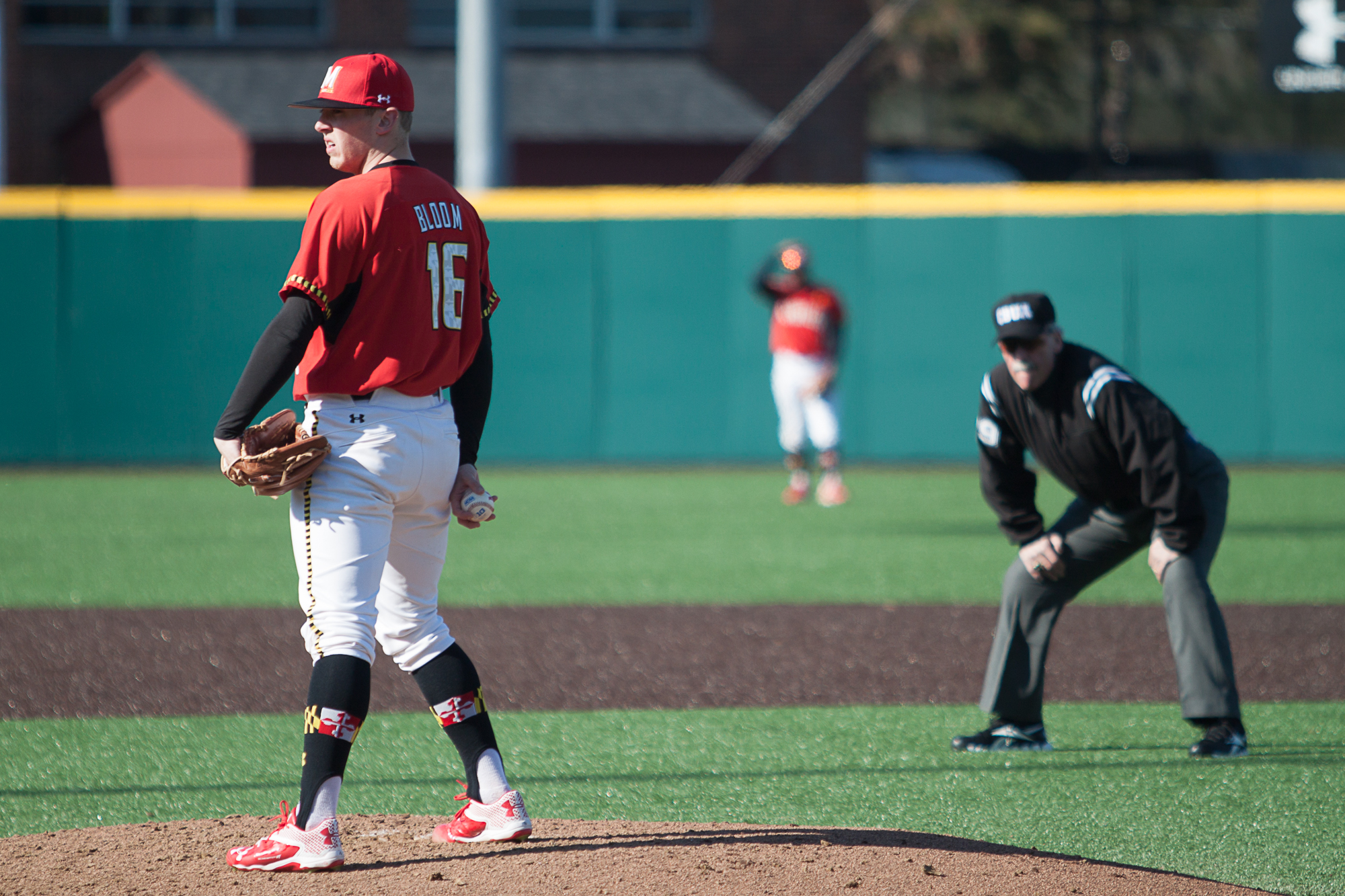Maryland baseball coach John Szefc never had the luxury of relying on three consistent weekend starters in his first three years with the Terps.
Despite unstable rotations, the Terps reached the Super Regional the past two seasons. But this year, Szefc said Maryland has the best weekend rotation since he arrived in College Park four years ago.
Right-handers Taylor Bloom and Brian Shaffer have ERAs below 2.60, while right-hander Mike Shawaryn, who’s struggled with a 4.37 ERA, was projected to be drafted in the first round of this summer’s MLB draft by multiple publications entering this season.
This weekend in a three-game series at Minnesota (19-10, 4-1 Big Ten), which holds the best team batting average in the Big Ten (.329), the Terps (18-15, 4-2) will try to prove they have one of the best weekend rotations in the country.
“Any baseball team is only as good as their starting pitching, and our starting pitching is way better than it was this time last year,” Szefc said. “They all have an opportunity with six weekends left to finish even stronger than where they already are.”
Bloom leads the way for the Terps’ pitching staff with a 1.99 ERA, the third-best ERA among Big Ten starters. He’s tossed three complete games this season, and in the three contests the Terps have lost with Bloom starting on the hill, the offense has scored one run or fewer.
Shaffer, another sophomore, hasn’t been too far behind. Despite not having great outings in his first three starts, Shaffer has turned it around to boast a 2.55 ERA and has thrown two complete games in fewer than 100 pitches.
Shawaryn, the Terps’ ace the past two seasons, was moved to start Sunday after struggling. He has a 2-3 record with a 4.37 ERA, compared to his 13-2 record and 1.71 ERA last season.
The junior said he has regained his confidence after struggling with his demeanor at the beginning of the year. After allowing three runs in a career-low 3.2 innings April 1, Shawaryn showed improvement last week as he made it through 6.1 innings while notching a season-high 10 strikeouts.
“It doesn’t matter really what days you throw,” Bloom said. “Me, Shaffer and Shawaryn are going to go out and try to give it our all. You got to play three games no matter what, so it doesn’t matter what order you stick them in.”
Last weekend against Ohio State, the Terps hit walk-off singles in two games. Without strong starting pitching, Szefc said, the Terps wouldn’t have a chance to win those matches.
“Our guys make their own breaks,” Szefc said. “A big part of that was our pitching allowing it, saying, ‘Come on, come on.'”
Szefc said Bloom is a different threat from Shaffer and Shawaryn. The Crofton native throws in the mid-80s, but his changeup keeps hitters off balance as almost all of his pitches move in different directions. Not many pitchers at the college level have success throwing below 90 mph, Szefc said, but Bloom is an exception.
Shawaryn, meanwhile, is what Szefc called “a traditional power arm.” But Shaffer said all three have similarities, too.
“Everybody can pound the strike zone,” Shaffer said. “It’s really cool because you don’t see it in college too much. A lot of guys will lose it after a while.”
One reason Szefc is confident in his weekend rotation is they all have experience pitching in the postseason. All three started in the Los Angeles Regional last year, and though Bloom didn’t emerge as a starter until late last season, he earned the win in the Terps’ final contest against UCLA to clinch a spot in the Super Regional.
Last season, though, the Terps didn’t have consistent weekend starters other than Shawaryn throughout the year. But even as Shawaryn has struggled this season, Maryland has had the luxury of receiving two other impressive starts every weekend.
“Baseball works off starting pitching at any level,” Szefc said. “It’s putting a lot of pressure on starting pitchers, but that’s why starters are starters. That’s why there’s only three weekend starters out of 35 guys; those are your three special arms right there.”



